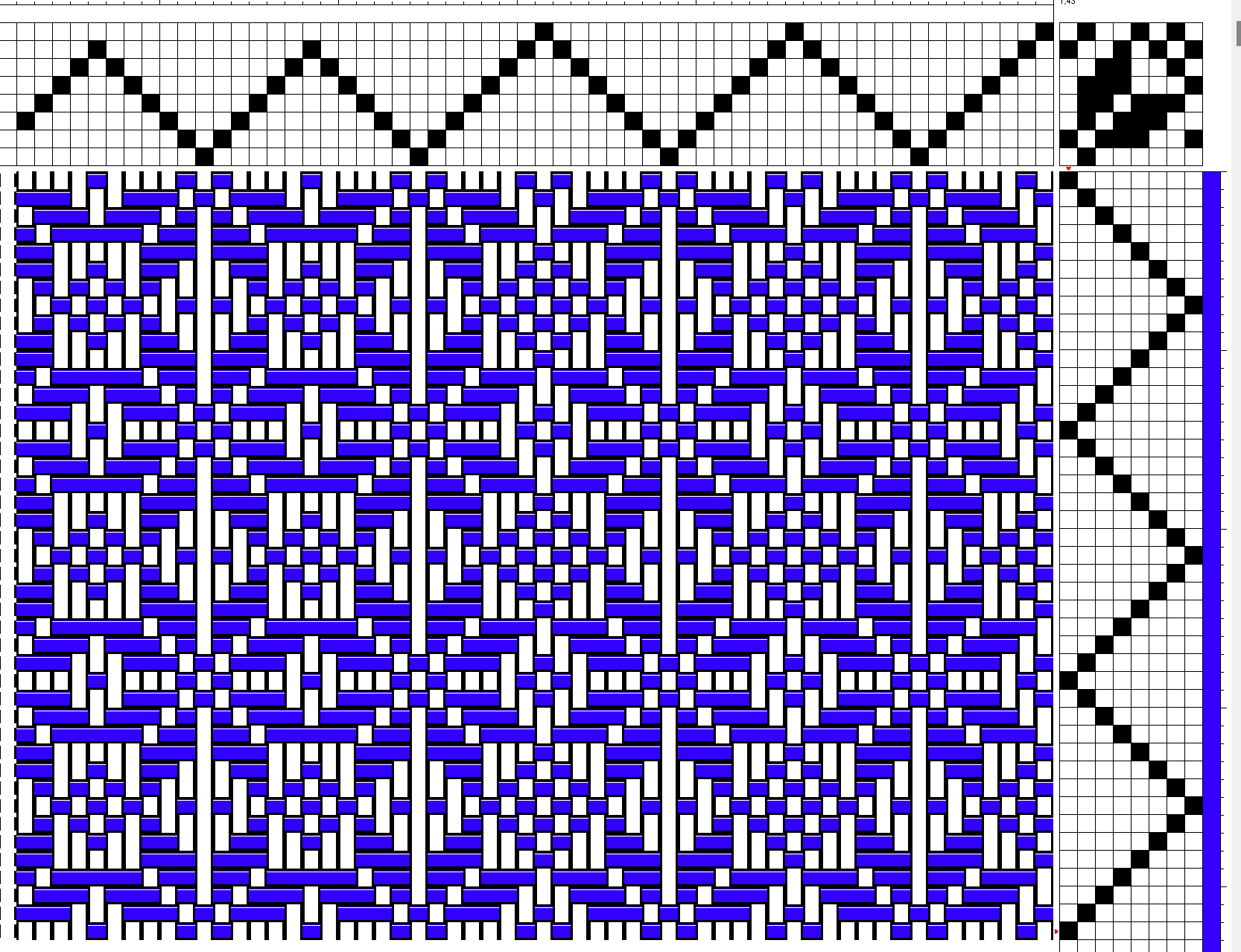This is another one of my favorite projects that we got to do at the 15 week Vävstuga Immersion Program. (See here to learn more about this program.) A series of great interviews with my teacher, Becky Ashenden, can be found here, here, here, and here, on another weaver’s blog.
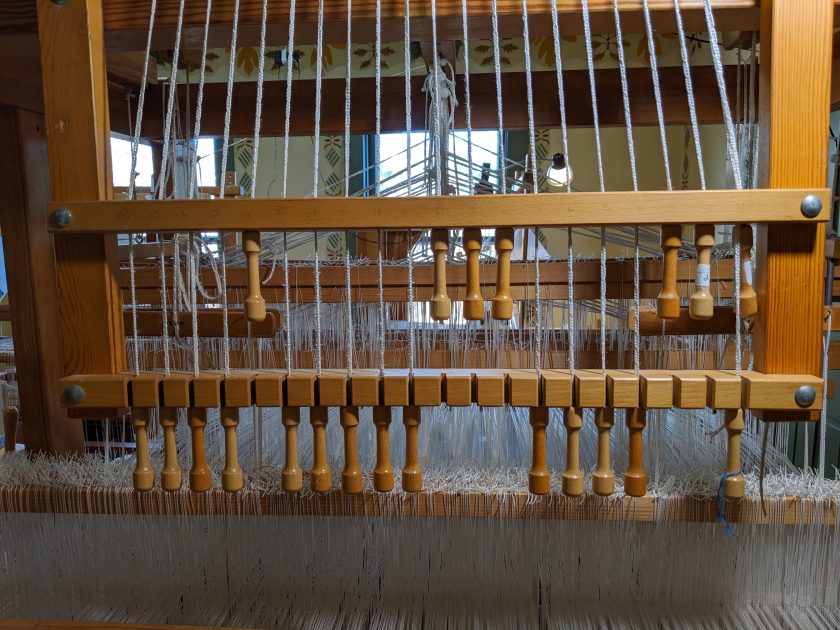
In my last post, I talked about our first drawloom piece. After having so much fun with that project, I was really looking forward to our second drawloom project. The first drawloom piece was woven so that the pattern was created by floats over a plain weave ground. This limits some of what you can do because you have to take the float length into consideration. This second project does not use floats; instead the pattern is created by either weft-faced or warp-faced satin. This means that anything you can draw on graph paper can be woven. We also did a damask in a simpler pattern, woven on a regular 10-shaft loom, which you can read about here.
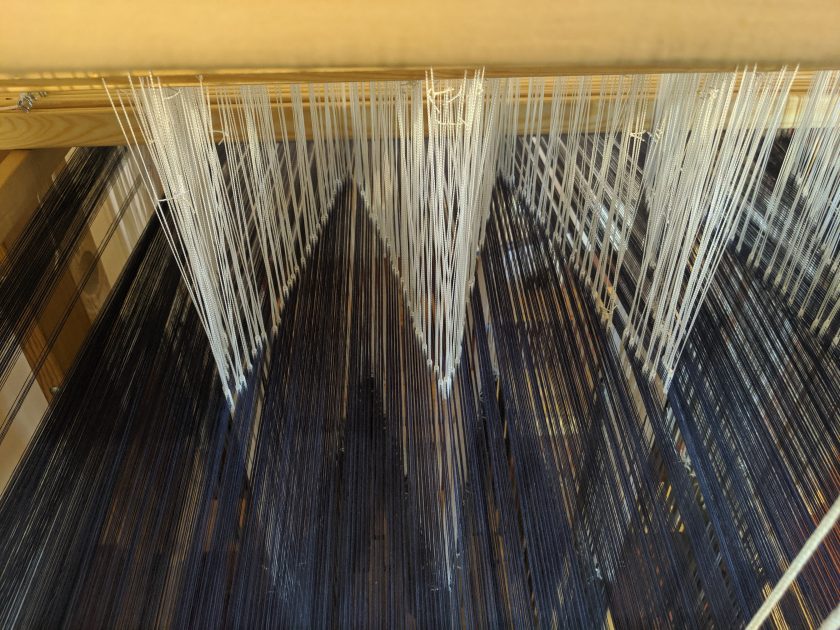
But there’s more! This loom was set up as a combination drawloom, meaning that in addition to the 29 pattern shafts, part of the warp can be controlled individually. For my design, this meant that the four sunflowers in the middle were controlled by the pattern shafts, but the borders were woven by controlling single units, allowing the borders to be mirror images and slightly different from one another.
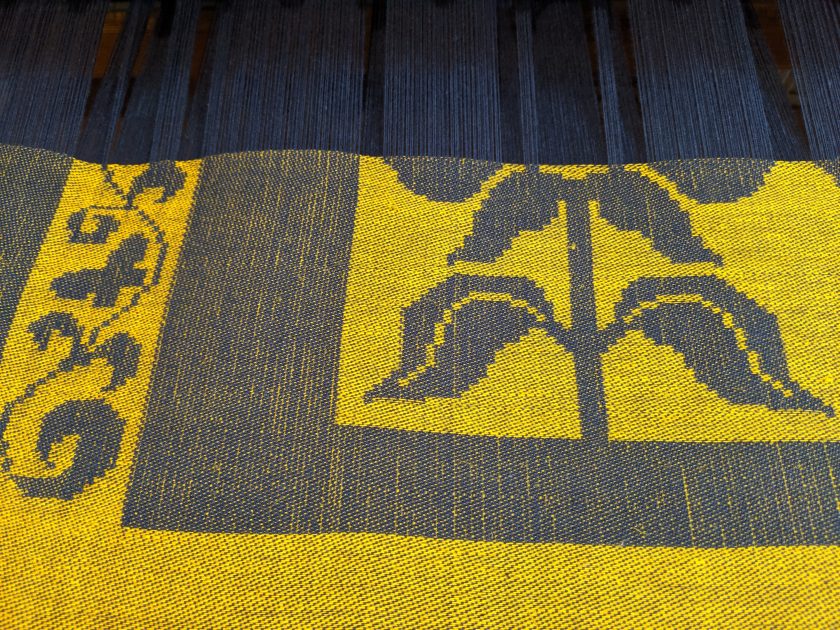
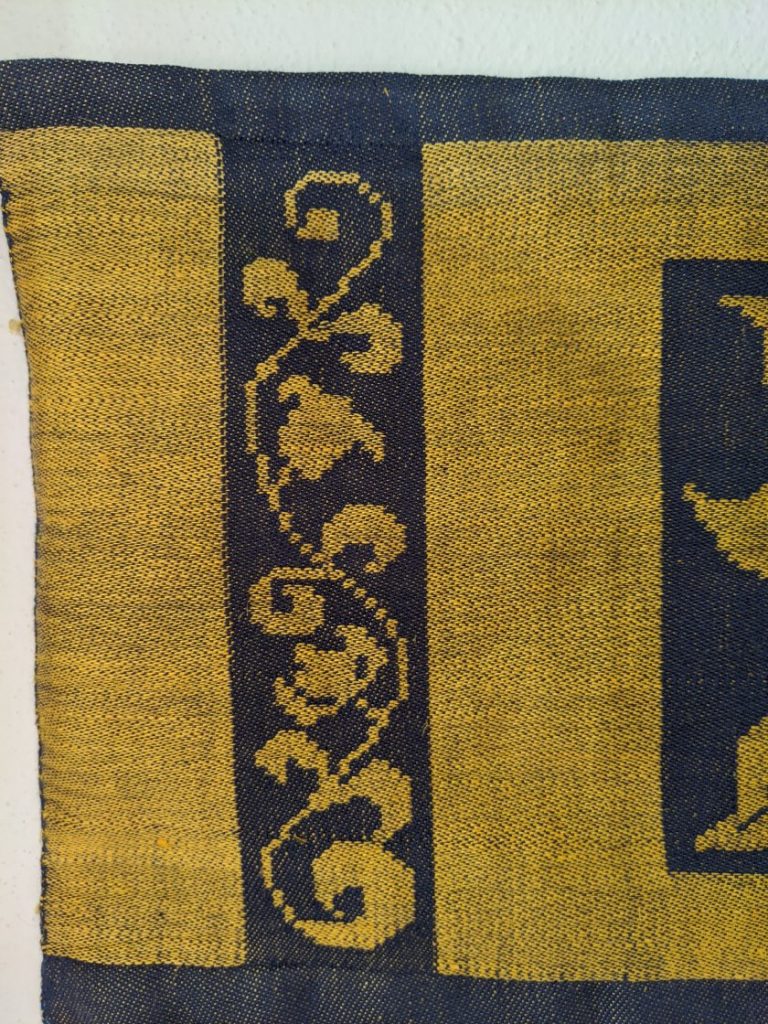
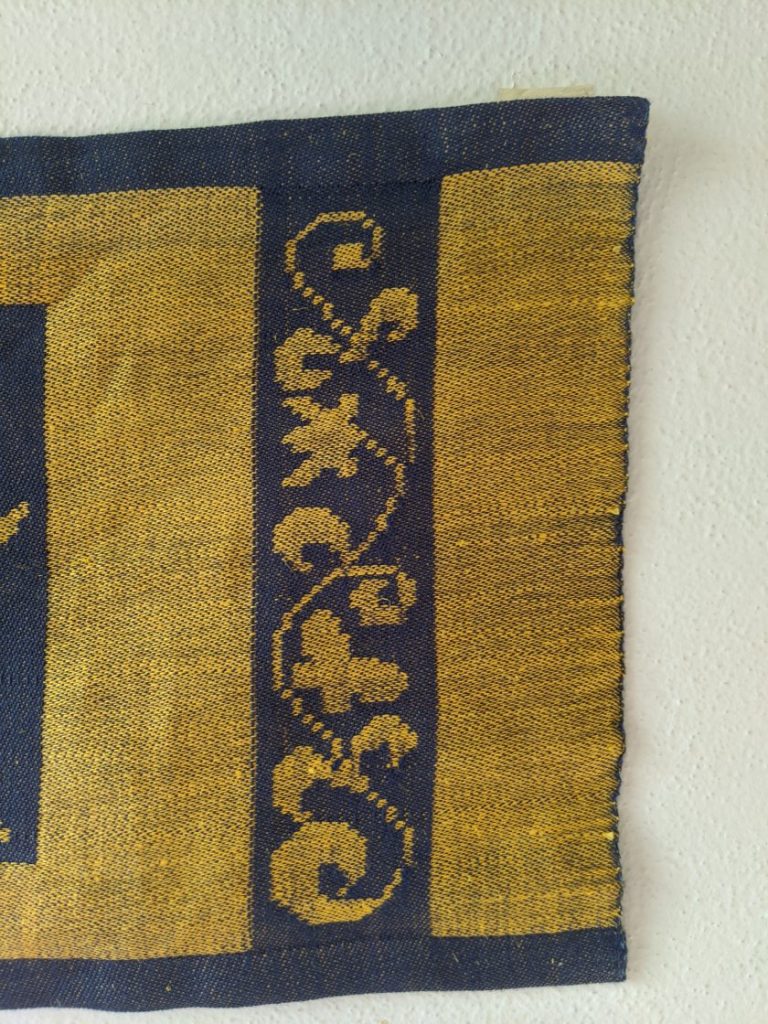
However, this also meant that it was even slower to weave than the opphamta. I made a video of me weaving one row of the pattern– and it is long because I wanted to show the full process and the actual amount of time it takes. In the video, I first pull the cords for the right border, and then the separate cords that control the left border. Then I pull the cords that control the pattern shafts, which weave the central sunflowers. Once I have pulled all the appropriate threads, I weave 5 picks of satin. That completes one row of the pattern.
If you watch the the video with sound on, you can hear a tinkling sound. These are the weights, called lingos, that are used to weight the groups of threads. I love the musical sounds that they make.
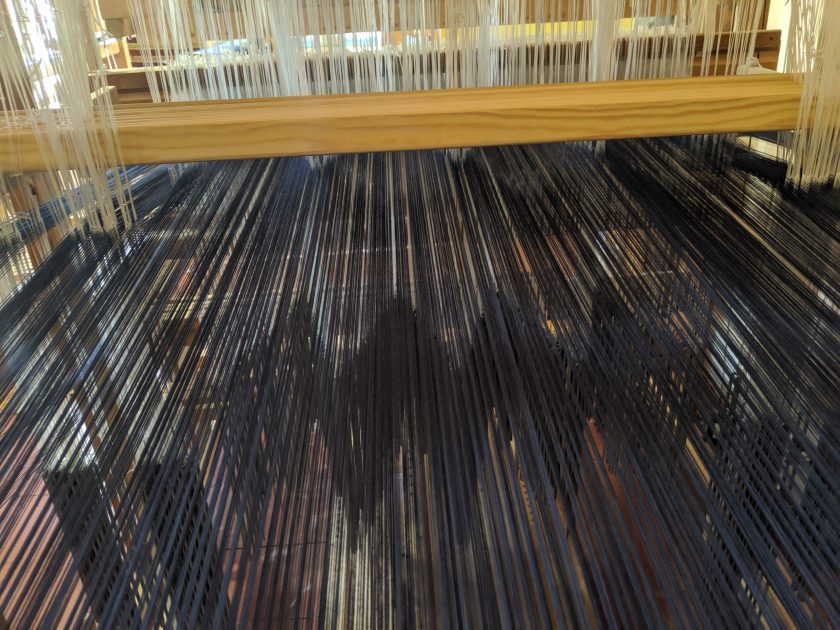
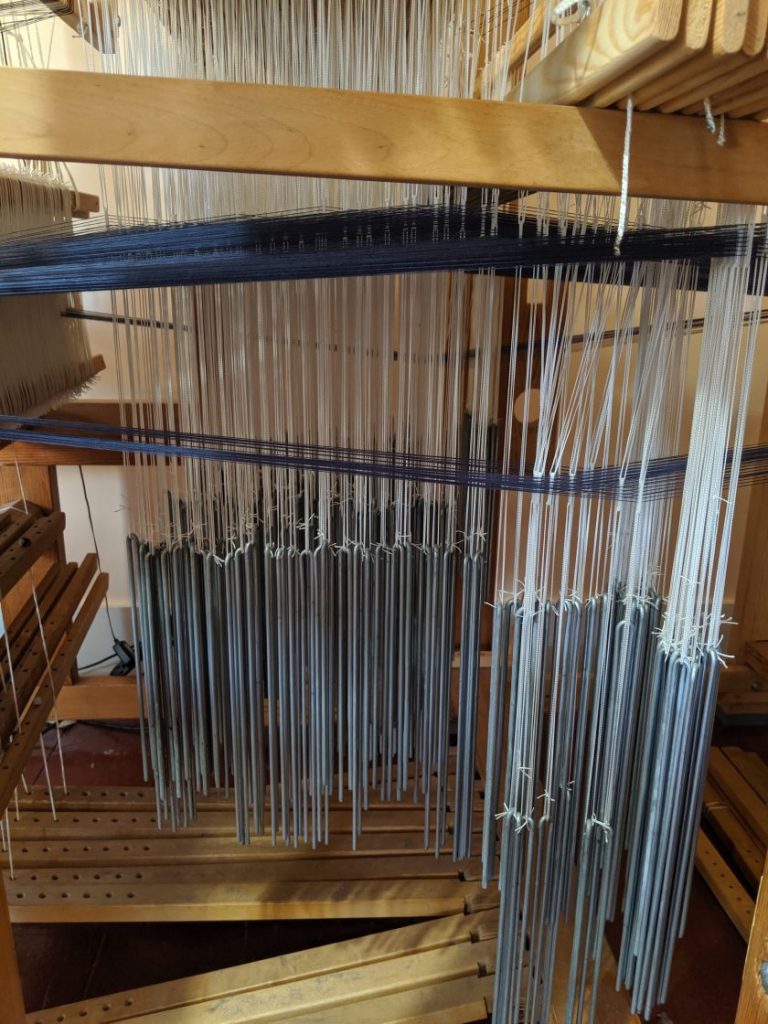

Just a quick note on the inspiration for this piece: sunflowers are one of my favorite flowers, and they were the flowers we had at our wedding. My mom actually designed our wedding invitations, and these sunflowers are based on her design. Because of the point threading, I had to make the flowers symmetrical, but otherwise they are basically the same. I designed the border flowers, based on inspiration from several books in Becky’s library.
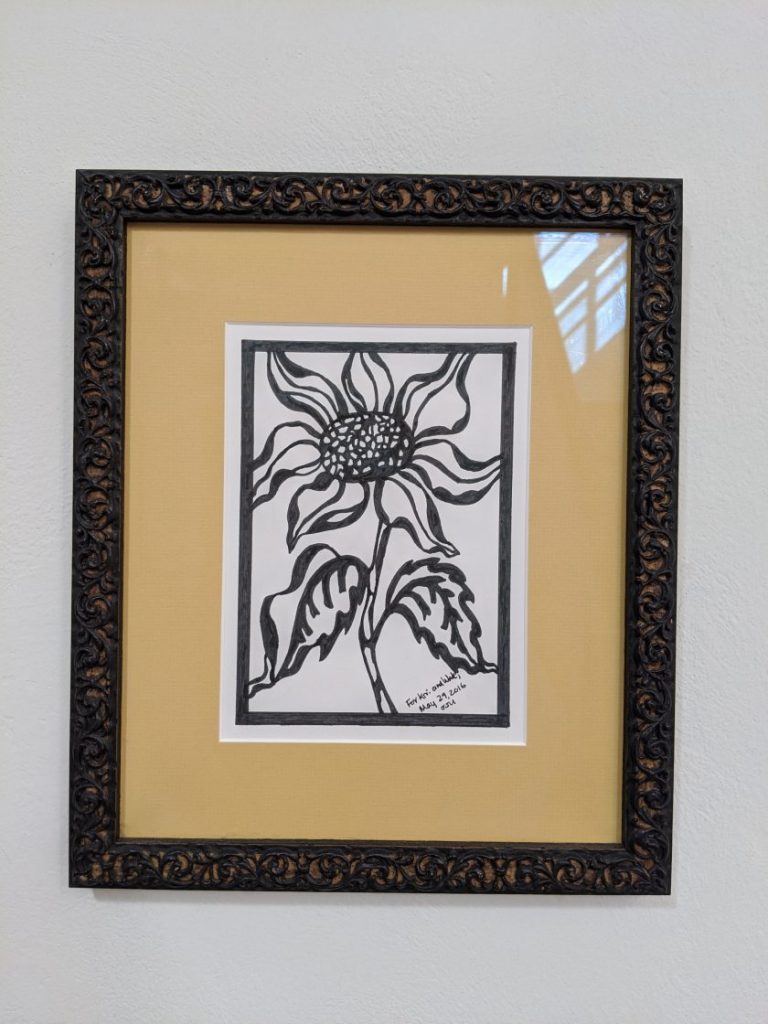
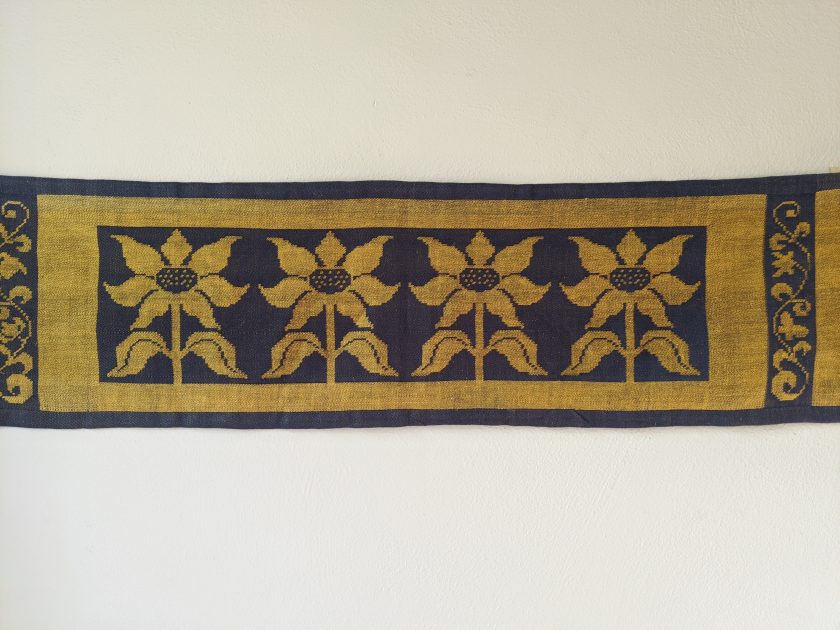
I love how this piece came out, and I have it hanging up in our stairwell so that we can see it everyday.
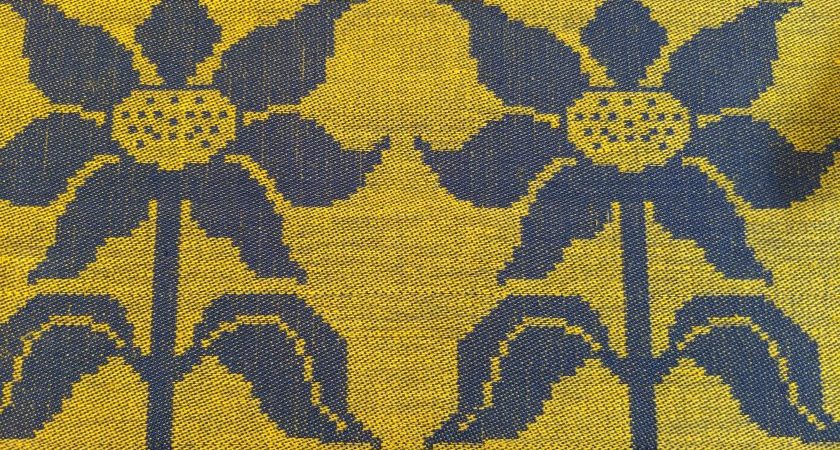
Hi, my daughter has asked me to weave kitchen towels with a sunflower/s on them. I am a pretty new weaver so whatever I do needs to be rather simple. Do you think that I could make something like you have on an 8 shaft table loom? If not, could you suggest something? Thank you in advance for any help, it is much appreciated.
I think something like this is the closest you can get on 8 shafts.